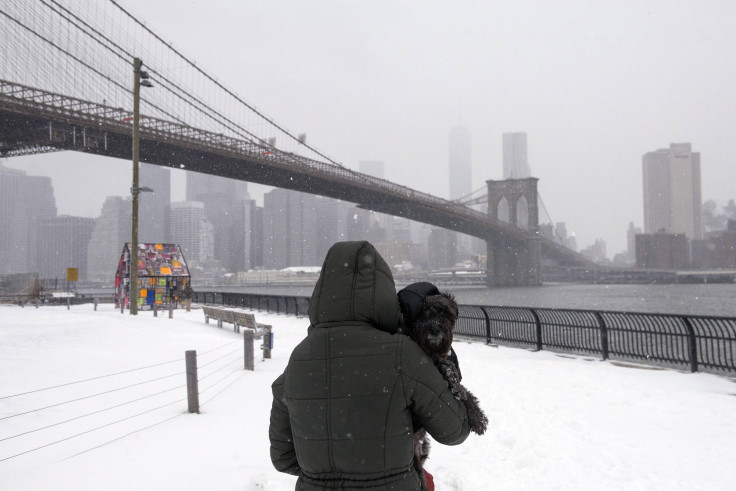Blizzard 2015: Will The New York Mesonet Lead To Smarter Decisions? State's Answer To Imprecise Forecasts Has Its Shortcomings

The blizzard that was supposed to pummel New York City late Monday and Tuesday didn’t live up to the hype. The dire predictions of two feet of snow were behind New York Gov. Andrew Cuomo’s decision to shut down the New York City subway system and Mayor Bill de Blasio’s call to ban travel on city roads. When New Yorkers woke up Tuesday morning to about six to eight inches of snow on average, criticism grew over the decisions that effectively shut down the city.
The imperfect forecast is one reason the state is building the most sophisticated weather system in the country, according to Cuomo. But it’s unclear how the $23.6 million system, dubbed the New York State Mesonet and being built at the State University of New York at Albany, will lead to better decisions by government leaders on whether to shutter transportation systems or close roads and schools.
Both Cuomo and de Blasio defended their decisions on Tuesday, saying it was better to err on the side of caution. The governor also argued that shutting down the subway Monday night meant it was easier to get the system operational again by late Tuesday morning.
“I would rather if there’s a lean toward one way … lean toward safety, because I’ve seen the consequences the other way and it gets very frightening very quickly,” Cuomo said. He was referring to Hurricane Irene in 2011 -- a storm that inflicted serious damage upstate but ultimately spared NYC. While the governor sent resources to New York City, the hurricane unleashed its fury on upstate New York, where seven of the eight people killed from the storm died from drowning.
De Blasio pointed to another storm -- the blizzard of 2010 -- as a reason to take precautions. His predecessor, Michael Bloomberg, took heat for the city’s slow response to that storm in which some roads weren’t plowed for days. The billionaire ex-mayor was accused of showing preferential treatment toward Manhattan, where roads were noticeably clearer than those in the four other boroughs. De Blasio said he “paid a lot of mind to what happened in 2010” and saw the “mistake of underestimation.”
“This storm was real and it was as big as it was projected to be, but it moved eastward,” de Blasio said. The mayor took issue with critics who said the city was being soft to shut down transportation for what turned out to be a near-non-event.
“I think it’s not softness to respond to extreme weather,” he said. “I think there is a problem of people wanting everything to be convenient, and this stuff is never going to be convenient.”
The Irene case is what spurred the mesonet project, which includes building 125 surface weather stations, including 17 that will continuously measure the vertical component of wind, moisture and temperature in the air, according to Jerry Brotzge, a program manager of the New York State Mesonet. By comparison, the National Weather Service, which is a partner in the project, has just three such monitoring tools in the state, and it monitors conditions just twice a day.
“They can see changes in the storm, so they can be faster updating their forecasts, their warnings and their products,” Brotzge said. “Right now, they’re blind in a lot of ways in what’s occurring in lots of locations across the state.” The system will help the state Transportation Department decide when and where it needs to deploy crews during blizzards and other extreme weather events, he said.
The extra measurements will also help detect flood risk in the state, according to Chris Thorncroft, a principal investigator of the project. “We’re effectively blind on many of these high-impact weather events,” Thorncroft said. “Irene was an example where we know record rainfall after the event.”
But the system will be limited to monitoring weather in the state. It cannot gauge weather outside of the mesonet, so planning for November’s historic Buffalo blizzard and this week’s winter storm would have had to rely on outside weather forecasts.
“It’s not a panacea, for sure. There are limits to what our mesonet data can do, but I do think that we’ll be improved,” Brotzge said, adding that studies have shown that for every $1 invested in a mesonet, $8 are saved in economic impact. “There’s definite economic value to having more information.”
© Copyright IBTimes 2024. All rights reserved.






















